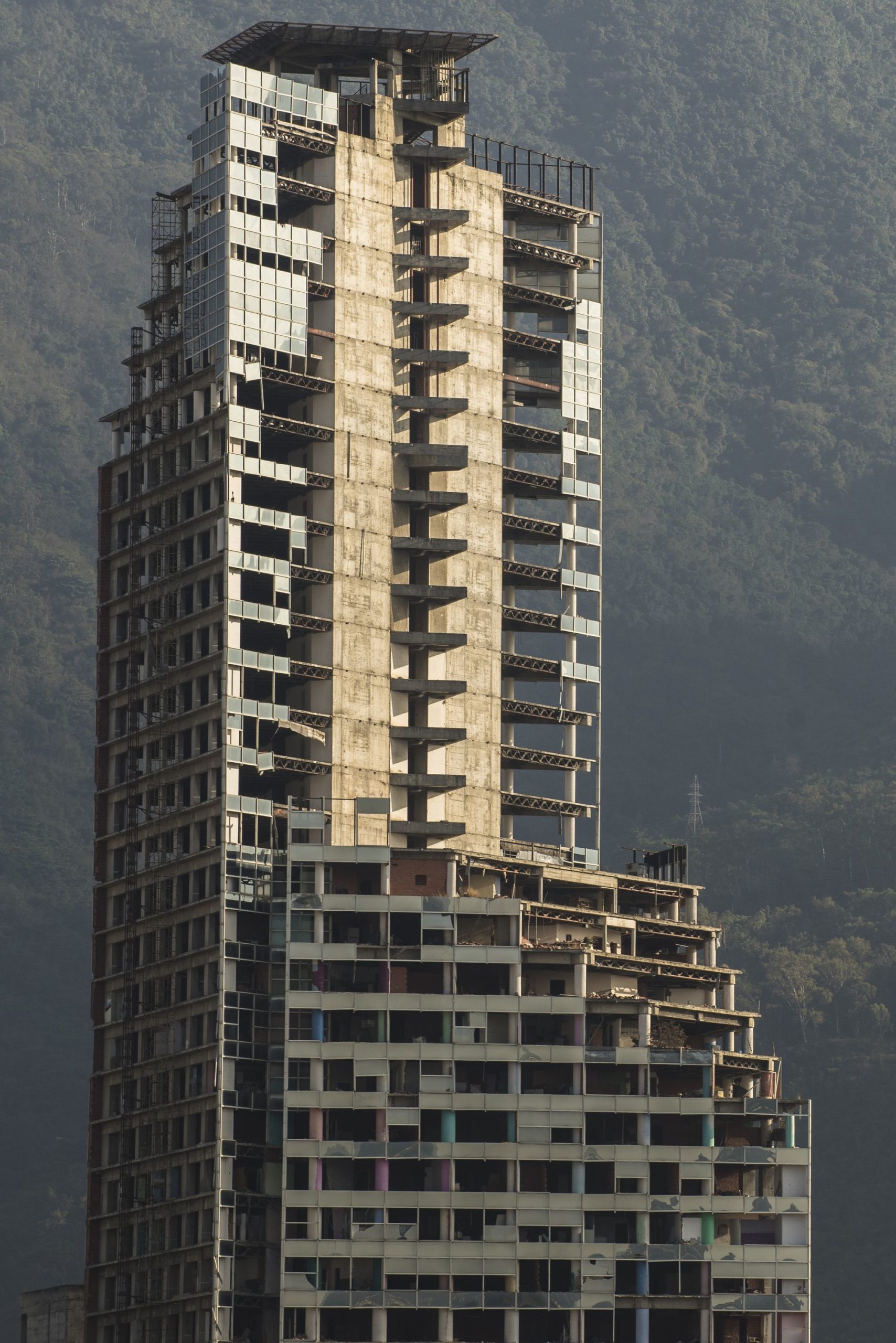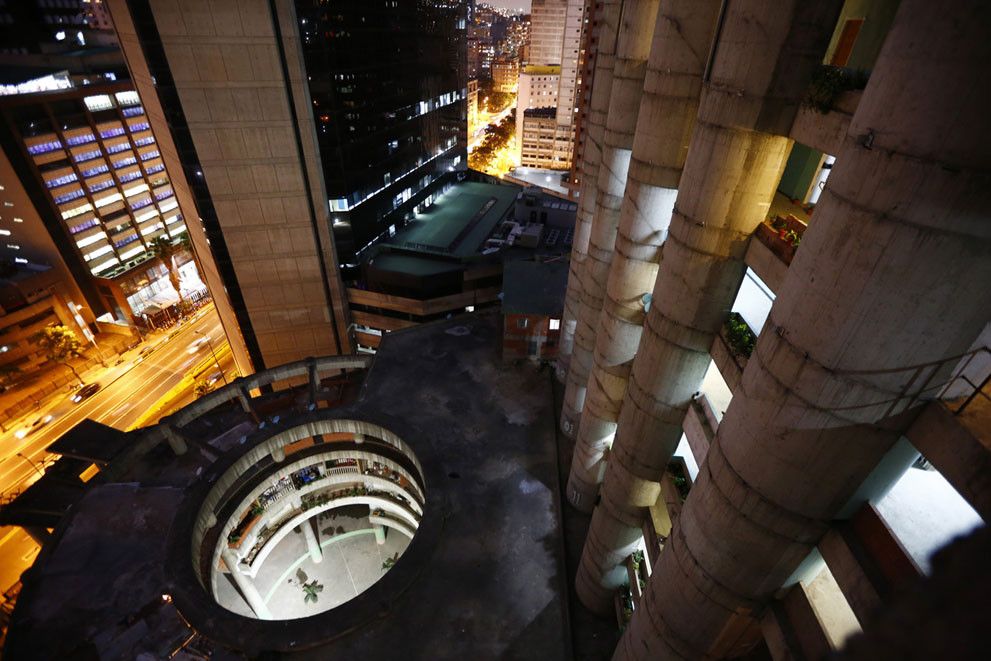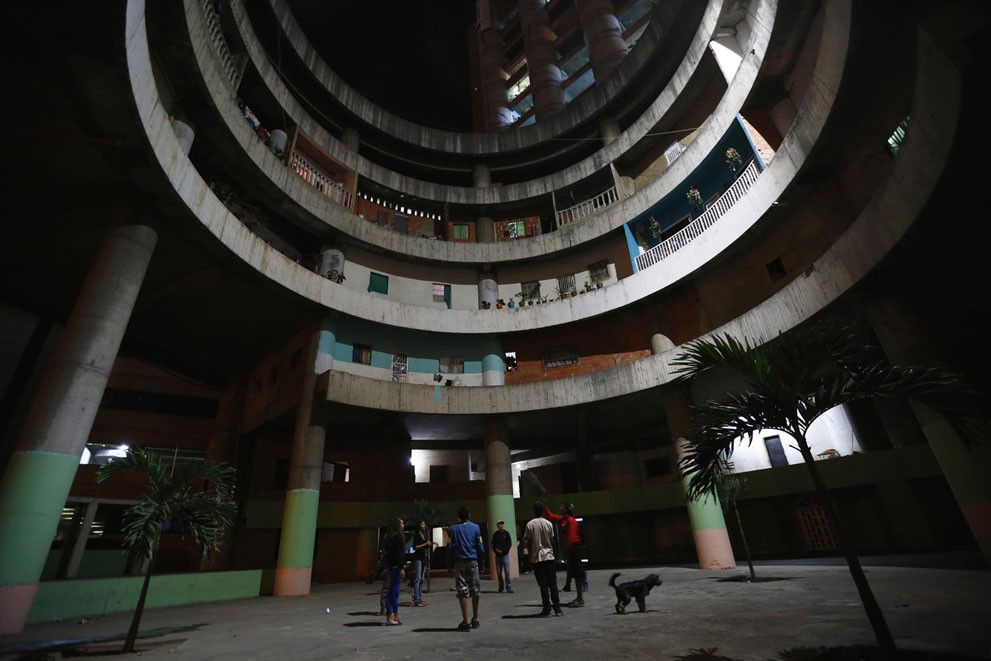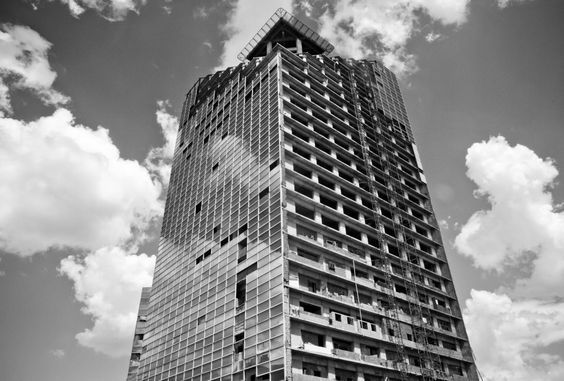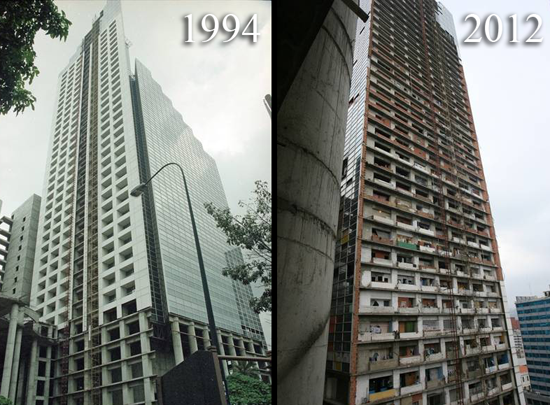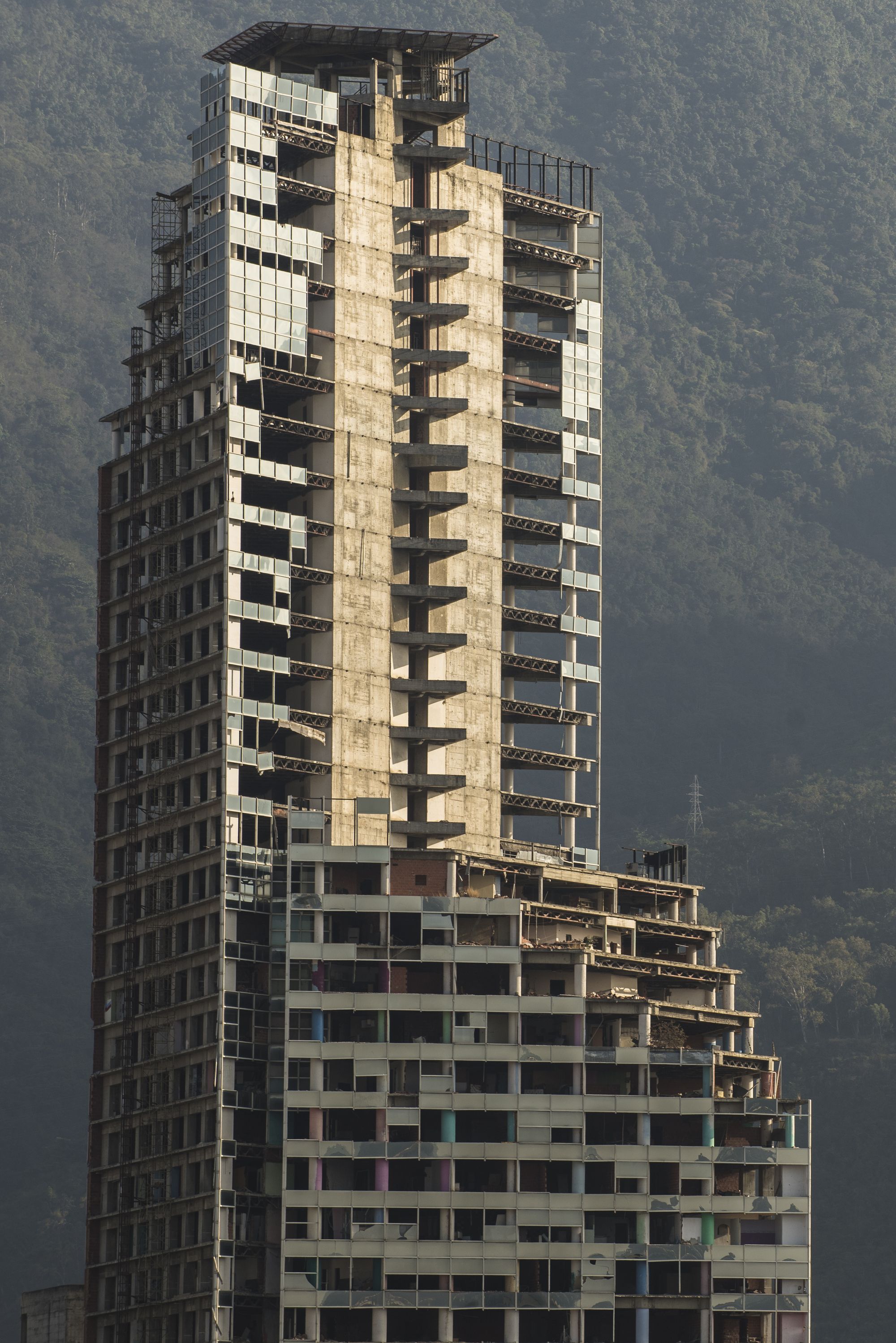Say hello to the vertical ghetto that is so aesthetically grim that even Homeland used it as a plot-line. The Tower of David is 45 storeys of sheer innovation in the center of Caracas. Brewing as the dream of David Brillembourg, a banker who wished for this building the pride and joy of a Latin American Wall Street, It was to be prime property until Brillembourg died unexpectedly in 1993. And the next year, Venezuela experienced its worst financial crisis in history, and most of its banks were wiped clean. The building remained nothing more than a concrete skeleton wrapped in glass panels.
But when the economy of Venezuela collapsed along with any sincere intentions left to complete the construction of this superstructure, then something really fascinating happened.
3000 unsuspecting citizens who had no place to call home, entered the premises of the Torre David, one family by another, and began to build their homes there. They created abodes through the gaps and grids formed by each of the raw concrete columns. They figured out how to create partitions for privacy, how to weave transparency for the sake of visual and spatial continuity.
They formed a method of circulation using colu+mns as coordinates, constantly evolving, adapting, and changing to what they called home.
There is exactly ONE entry for the entire building that the residents use for ingress, egress, and services. The concrete sponge has a lobby, with painted large walls and growing trees within it. Where there should have been elevators, are large massive voids instead. Which makes one think?
Does one climb the stairs to the 44th floor?
Resourcefully, the very inventive inhabitants smartly used the adjacent parking garage as a taxi route to shuttle up and down through the ramps, in order to shorten the hike up to the apartments.
Within the tower, the kind of community building that has occurred there is incredible. Each problem has a solution, which isn’t technically right but is practically perfect. What keeps everyone alive is the small economies and businesses that run on each floor. It’s a living city by itself. A self-sustained slum.
Dutch Photographer Iwan Baan spent a good amount of time documenting the Tower of David. He says during an interview with The Guardian, “Its remarkable to see the design decisions that they’re making, like when everything is made out of red bricks, some residents will cover that red brick with another layer of red brick wallpaper, to make it look aesthetically pleasing. Another remarkable fact in the box is that there’s also a gym on the 30th floor, where the weights and barbells are made out of leftover pulleys, cogwheels from the elevators which were never installed. Throughout the tower, you come across all kinds of services, a barber, small factories, and every floor with its personal little grocery store. While the columns and beams have taken families into their edges and niches, accommodating them long enough to feel secure and homely, the façade looks like a deliberate section that is forever changing.
But the day everyone had dreaded, had to come sometime. After eight good years of living in a makeshift home and surviving among blocks and bars, The residents in the Tower of David were evicted, as hundreds of people loaded up everything they owned: plasma TVs, stoves, mattresses, and pets, to live in a town of the outskirts of the city.
After eight years, these residents were finally leaving one of the world’s most famous slums—a place where they designed their own life and made it home.
Iwan Baan asserts with awe, “The ingenuity is incredible. These people have absolutely nothing, but they find ways to get by. The residents have their own security system and strictly control access, though completely outside of the law. They are so proud of what they’ve achieved – they built everything in there by hand.” With authoritarian plans of demolishing it last year and most residents out of it, we aren’t expecting it to stand so tall anymore. So what we could call the world’s first Slumscraper, may also be the last.
Written By: Ekshikaa S
